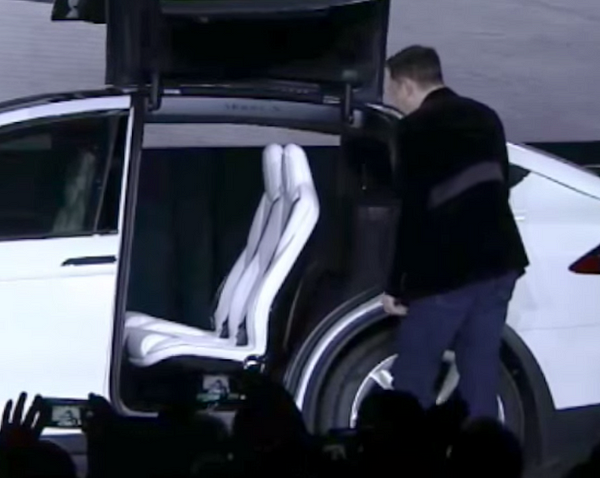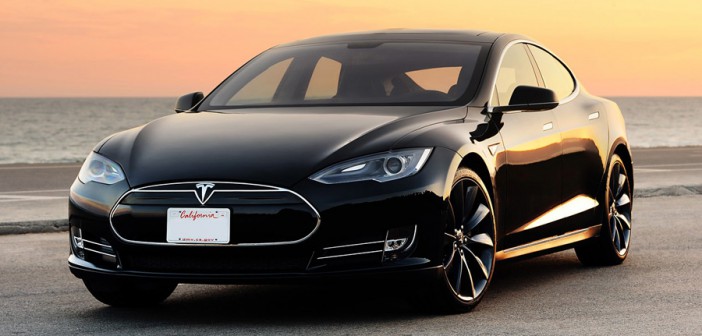Elon Musk’s sleight of hand
Like many people, I’m a fan of Elon Musk, the CEO of Tesla, SpaceX and Chairman of Solar City. So much so that I’m nerdy enough to listen to the quarterly conference calls of Tesla, and keep a close eye on the movements of each company.
Watching Tesla launches, like the recent Model X and Powerwall announcements, all remind me of watching Apple and Steve Jobs product launches back when it was still considered fanboy(ish), and not a pre-requisite for people working in tech or journalism (ie anytime pre iPhone in 2007).
Musk’s presentation style is not as polished as a Jobs show — but he manages to pull it off in a slightly awkward, if endearing, manner.
Indeed, like back then with Jobs, today many people have no idea who Musk is — he has yet to meet the Jobs levels of fame.
However, beneath some of the recent announcements are I believe some more fundamental things at work. Clearly everything I write is only as an interested observer, and is certainly not based on any fundamental research. I’m as in the dark as everyone else about Musk’s future intentions — but I do enjoy exercising my brain on what’s possible or probable.
Before we begin, keep in mind throughout Tesla’s stated goal: “To accelerate the world’s transition to sustainable transport.” It’s not to make the coolest looking electric cars.
This week Musk launched the long awaited and much delayed Model X — the SUV followup to the incredibly well reviewed Model S sedan. But during the show, Musk almost downplayed features of the Model X that, within the right circumstances, are in my view nothing short of revolutionary. Some features already exist in the Model S — but I believe this new combination is a step in a new direction.
Let’s start with the first example.
A dozen minutes into the launch of Model X, Musk says
“So let’s move on to the car itself. What’s cool and fun about the car? Doors & Windows. So. You’re obviously familiar with the Falcon Wing door. What we also have is an Auto Presenting front door. So what it will do, it will triangulate my position and detect that I am moving towards the front door. It will open the front door. Without me touching anything. I will sit down, and it will close the door. Like an invisible chauffeur.
(He then laughs to himself in the car)
It’s a cool and fun feature. But was it a feature added to the car because it was cool and fun? It seems like quite a bit of effort just so a human doesn’t have to touch the handle of a door and close it after them. It’s like a first world problem of first world problems.
And it’s well beyond “fun” when you’re building any expensive complex device such as the X — which Musk has previously described as “the most difficult car in the world to build”.
But onto to the second example.
Later in the presentation Musk focuses audiences on how the Falcon Wing doors are a wonderful innovation and “look cool”. But the main crux of this innovation, Musk appears to argue, is the ability for parents to get full advantage of the second and third rows of the Model X — without the discomfort of “cantilevering” themselves and their kids seats as they would with normal SUVs.

Also during this demonstration (left), Musk “presses the button” (he actually says those words) so that the second row seats move themselves forward electronically. He then gets in the third row, to demonstrate the space and ease of ingress.
I’m now asking myself a number of questions during this demo — which only grow when Musk moves on to talk about the Falcon doors.
Which leads us to example number three.

In the next set piece, he shows how easy it is to get into the car via the Falcon Doors when two other vehicles are parked directly alongside the X. Ostensibly, the rationale for this demonstration was again the scenario of perhaps parents at a shopping mall, trying to manage their shopping and their kids — and some rude people parking beside you. The Falcon Wing doors sense the proximity of the nearby cars, and still open with ease, again allowing for ease of ingress for humans.
Which brings us to example number four:
Musk, almost in passing, mentions the extra room around the rear seating area. Here he outlines how wonderful this feature is:
“Probably the best-looking second seat — if that’s a superlative — ever. But it actually provides more functionality because you have a flat floor and you can stow something. So if you’ve got a backpack, or a laptop, or a handbag you can stow that under the seat, instead of having it at your feet. So it actually provides utility as well as aesthetics.”
Except that later in the presentation, Musk and his team demonstrate the enormous overall storage capacity of the X — so I’m left wondering why emphasise the extra stowing feature under the rear seats?

Lastly is a feature that wasn’t actually presented — but is a feature still under development — the “snake”. This was demoed plugging into a Model S earlier this year, but will clearly be compatible with the Model X too, whenever it becomes available. Essentially it is a charger for the car that recognises when a vehicle is present and plugs itself in, without the drivers having to get out and do it themselves.
But when I pull these five things together I don’t see features that are being built or added because they are “fun”, or because they are designed for frustrated parents in shopping malls with more luggage than any family in the history of the world. How much did each of these features cost in both time and money for Tesla? I wonder.
No. None of these features have anything to do with building conveniences for humans too lazy to open doors with their hands, or indeed for parents squeezing between cars.
They were built for something else — and this is Musk’s sleight of hand.
All of these feature were built for one reason — a self driving future combined with an entire self-driving mobility platform. The Model X was built to be either the ultimate self-driving taxi, or the ultimate human/self-driving rental car — or both. Or as Musk almost laughingly hinted during the presentation — an invisible chauffeur will be doing all the work.
- A front door that opens when you approach it and closes itself when you get in — because it’s fun? No. A self-driving car that arrives to collect you and opens its doors when it detects your proximity based on your watch/mobile device nearby (plus the sensors).
- Electronic seats that move forward to make the lives of parents easier at the touch of a button? No. A software update will allow the seats to configure themselves for passengers arriving to get into a car where the doors open themselves (Uber – but you tell it how many people and the car gets ready for the group).
- Ease of ingress and egress for humans in the Model X because of Falcon Doors? No. The doors don’t exist for frustrated parents — they’re doors designed for a self-driving taxi/rental mobility platform.
- More storage under the rear seats because you need more of it, and because you can (down to the space that electric cars give you)? Yes. But when Musk uses the word “stow” I think airline. And when I think airline I think passengers. And when I think Model X I think taxi — with lots of room for your bags — with no driver in the front seat.
- A snake that extends to charge your car because it saves your lazy ass from having to get out and plug it in yourself? Yes, but if the car is driving itself it’s going to have to be able to reverse into a station and commence charging — without the presence of a human.
If I’m correct — and I think I am — the future for Model X owners won’t involve them being the only drivers of their own cars. It will involve them renting out their cars to everyone else for a price — with Tesla taking a cut — and the car driving itself. As Musk so often says, cars spend most of their productive lives sitting unused in people’s driveways. Which is crazy for such an expensive piece of hardware.
Model X will be a self-driving car with doors that open when you approach, seats that configure for the number of passengers who can then easily ingress and egress through Falcon doors, with lots of in-car stowage available, that runs on batteries in the floor charged by solar fuelled battery packs at supercharger stations (and elsewhere).
How will Uber, Hailo, Hertz, Avis, Enterprise, Budget et al compete with this? It’s not exactly clear to me. All of those firms rely on fossil-fuelled cars and humans to function. Both involve high costs (financially and environmentally).
Tesla vehicles run (or will ultimately run) on freely available solar energy — for no charge to its owners at supercharging stations.
And one has to imagine that the Model X has much if not all of the hardware necessary that — should a certain over-the-air update arrive at some point in the future — then the thing will just drive itself around.
I’m not the first to speculate on what might be called “Tesla Mobility”. Adam Jonas at Morgan Stanley recently asked Musk directly during a conference call exactly this type of question. Musk decided it was best not to comment. And this was before we saw the Model X launch.
And remember: “To accelerate the world’s transition to sustainable transport.” Yup, that’s what Tesla Mobility would be, if Tesla can pull it off.
At the very least, the next five years (not the next ten, this will happen faster than we think), will be very interesting.
(Disclosure: I’m a *very* small shareholder in Tesla and Solar City. I’m the founder over at Vizlegal (in Ireland!) where we’re building a global API for law — a
sorely needed thing if you want autonomous machines to know what human laws to obey (and even a Musk Mars colony needs laws too). I’m on Twitter if you have any questions!)




